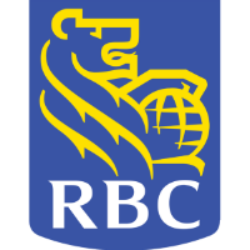As the economic landscape shifts, Bank of America (BofA) has highlighted early indicators of an easing cycle impacting corporate earnings. With interest rates peaking and inflation showing signs of moderation, companies are beginning to feel the effects of policy changes and are adjusting their financial strategies accordingly.
What Is an Easing Cycle?
An easing cycle refers to the process where central banks reduce interest rates or implement other accommodative monetary policies to stimulate economic growth. This usually occurs when inflationary pressures subside, and economic activity slows, prompting central banks to support demand by lowering borrowing costs.
Impact on Corporate Earnings
BofA analysts observe that the initial effects of the easing cycle are making their way into corporate earnings reports. Companies across various sectors are showing:
Improved Margins: As inflation cools, input costs such as raw materials, transportation, and labor are stabilizing. This is particularly beneficial for industries heavily impacted by price volatility over the past year. For instance, consumer staples and industrial firms are beginning to see some relief in their operating margins.
Lower Borrowing Costs: With the potential for lower interest rates on the horizon, companies with high levels of debt are expected to benefit. Lower rates will reduce the cost of servicing debt, freeing up cash flow that can be reinvested into growth initiatives or returned to shareholders through dividends or buybacks.
Revenue Stabilization: Many companies that struggled with passing higher costs onto consumers are now seeing improved revenue as inflation-driven pressures ease. Consumer spending remains resilient, boosting sectors such as consumer discretionary and real estate.
Sectoral Impact
Industrials and Manufacturing: Companies in these sectors, which were hit hard by supply chain disruptions and rising input costs, are beginning to see improved profitability as costs stabilize. This early recovery may accelerate as interest rates decline, increasing investment in capital-intensive projects.
Consumer Staples and Discretionary: Consumer goods companies are expected to maintain robust earnings as input prices stabilize, and consumers benefit from a stronger purchasing power.
Real Estate: Lower interest rates could eventually boost demand for real estate assets, as lower mortgage rates and financing costs make purchasing and investing in properties more attractive.
How to Leverage Market Data
For investors looking to capitalize on these trends, tracking real-time earnings data and sector performance is crucial. Utilizing APIs such as the Earnings Historical and the Up/Down Grades by Company can provide valuable insights into companies poised for growth in a changing economic environment. These APIs offer data on earnings trends and stock rating changes, helping investors stay ahead of market movements.
Key Takeaways:
Easing Cycle Underway: Bank of America suggests that the early effects of monetary easing are now visible in corporate earnings, particularly in sectors heavily affected by inflation.
Margin and Revenue Recovery: Companies are seeing improvements in margins and revenue stability, driven by lower inflation and borrowing costs.
Sector-Specific Opportunities: Industrials, consumer goods, and real estate sectors stand to benefit most as the easing cycle progresses.
Conclusion
The ongoing easing cycle presents new opportunities for investors. As corporate earnings reflect the improving economic conditions, companies in key sectors are positioned to gain from lower costs and increased consumer spending. Keeping a close eye on sectoral performance and leveraging comprehensive data sources will be crucial in identifying potential winners in this evolving landscape.
About NYSE: BAC
B
ank of America Corporation, through its subsidiaries, provides banking and financial products and services for individual consumers, small and middle-market businesses, institutional investors, large corporations, and governments worldwide. Its Consumer Banking segment offers traditional and money market savings accounts, certificates of deposit and IRAs, noninterest-and interest-bearing checking accounts, and investment accounts and products; and credit and debit cards, residential mortgages, and home equity loans, as well as direct and indirect loans, such as automotive, recreational vehicle, and consumer personal loans. The company's Global Wealth & Investment Management segment offers investment management, brokerage, banking, and trust and retirement products and services;
Price: 45.90
Market cap: 352.2 billion USD
Eps: 2.76
P/e ratio: 16.63
Focus Analysis On: BAC
All news about: BAC
 Berkshire Hathaway
Profile, Qualitative, Financials ...
Overview
Berkshire Hathaway
Profile, Qualitative, Financials ...
Overview
 Royal Bank Of Canada
Fundamental Analysis
FA
Royal Bank Of Canada
Fundamental Analysis
FA
 Pfizer Inc.
Supply Analysis
Drugs, Devices, Recalls, Compliance ...
Pfizer Inc.
Supply Analysis
Drugs, Devices, Recalls, Compliance ...
 Amazon.com, Inc.
Risks/AI
NLP Analyzed Risk Factors, AI Arguments
Amazon.com, Inc.
Risks/AI
NLP Analyzed Risk Factors, AI Arguments
 The Boeing Company
M&A Deals
Deal Sizes, Dates, Security Type, S-4 ...
The Boeing Company
M&A Deals
Deal Sizes, Dates, Security Type, S-4 ...
 Adobe Inc.
Employee Analysis
VpE, Survey, Geographical Biding & Aqc.
Adobe Inc.
Employee Analysis
VpE, Survey, Geographical Biding & Aqc.



